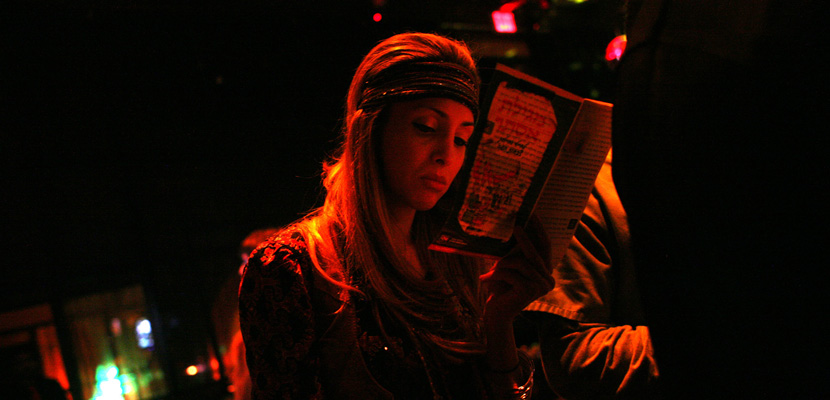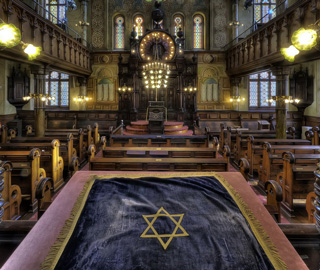For several decades, Jack Wertheimer and Steven M. Cohen have been calling on American Jews to pay attention to the social, cultural, and demographic realities of their life as a community—and to how those realities have begun to endanger the future of that community. A high rate of intermarriage, a falling birthrate, and a steep decline in either religious or secular affiliation have placed at risk the ability to maintain a vital, pluralistic center, anchored in a strong middle ground between assimilation on the one hand and ultra-Orthodoxy on the other.
Wertheimer and Cohen’s latest essay, “The Pew Survey Reanalyzed,” offers a social-scientific version of the classic jeremiad, the prophetic lament over the imminent failure and downfall of a people. Unlike most examples of the form, social-scientific or not, theirs does not delve into the realm of ultimate causes or present a large-scale explanation of the tribulations that beset American Jews. But it does do something else: in a welcome turn, it offers glimmers of hope in the form of concrete suggestions for communal or philanthropic investments that, they believe, might yet help retard the downward slide.
Still, the state of non-Orthodox Jewry calls out for explanation and analysis. Although Wertheimer and Cohen begin by separating American Jews’ religious behavior from such other factors as their educational and social-economic status, this is not really possible. Without connecting the heart of Jewish culture to the lungs of Jewish life, one cannot grasp the condition of American Jewry. Jews are still unique in interesting ways, but overwhelmingly they reflect the larger society. Those among them, preeminently the Modern Orthodox, who do manage to maintain a committed Jewish life while being highly integrated within American society are very much the exception and not the rule.
What the Pew study found for the great middle of early-21st- century American Jews has been unfolding for close to a century. The decision by the vast majority to cast their fate with the promises and rewards of American society—including not only higher education and entry into the professions but the bedrock guarantee of a religiously neutral civic sphere—is primarily responsible for the disappearance of a vital Jewish center. Not all at once, of course. For the first half of the 20th century, the pursuit of the American dream engendered little conflict with Jewish habits of in-marriage and ethnic solidarity. As a small minority made up mostly of immigrants and their children, Jews sought each other out on the basis of shared values, places of residence, careers—and anti-Semitism.
This sense of common destiny persisted even as Jews found their way into increasingly open American institutions in the post-World War II period. They had every reason to believe that the bargain they had struck would succeed—that the center would hold—and their intuitions in this respect were reinforced by some of American Jewry’s most distinguished social scientists. And yet, because of a variety of shifts in the larger society, they would be proved wrong.
The consequent unraveling has accelerated at a pace that was hard to grasp fully even twenty years ago. Across all American groups and religions, the multicultural ethos has made in-marriage appear parochial, and the post-modern embrace of self-invention and mix-and match identities has undermined traditional forms of authority already long in jeopardy. Younger Jews have rejected the importance of Jewish difference, while demanding the right to their own difference when it comes to their choice of partners, their careers, and their place in history.
In order to shake Jews out of their complacency, Wertheimer and Cohen begin by deconstructing the comforting myths and stories Jews tell each other about their condition as a community. However, it is no longer clear what stories Jews do tell. As we learn from recent research, many young non-Orthodox Jews tell themselves that whatever they practice is by definition a legitimate form of Judaism, and whatever they believe constitutes a Jewish belief. In sum, Jewish stories are unlikely ever again to be as coherent as they once were.
If we no longer know what Jewish stories are, we do know that the problems that beset American Jews are not exclusive to them but are commonplace in the larger culture in which they are socialized. Context is all. Thus, Wertheimer and Cohen unequivocally demonstrate the negative impact of intermarriage on Jewish identity over generations. According to them, fewer than a third of non-Orthodox men and barely two-fifths of women between the ages of twenty-five and thirty-nine are married. Late marriage is linked, inevitably, to a low fertility rate of 1.7 children per woman, well below replacement level. The implications for transmitting Jewish life are devastating.
How are these issues played out in the larger society? Marriage will have to suffice as my single example of how important it is to interpret the non-Orthodox Jewish experience in the American context. In 2014, the Pew Research Center also conducted a study of contemporary American marriage, and its findings demonstrate strong parallels with Jewish marriage patterns. The study uncovered a strikingly low marriage rate for middle-aged Americans: a quarter of these are unmarried, and the marriage rate for those older than twenty-five is the lowest in the nation’s history. For whites, the non-married rate has doubled since 1960. Men are less likely to marry than women, but only slightly so.
It is no surprise, then, to read that younger Americans do not value marriage. When asked if “society is just as well off if people have priorities other than marriage and children,” 50 percent of Pew’s respondents agree. The percentage of those under thirty who concur is 15 points higher.
Importantly, according to this study, economic insecurity is in part responsible for the decision of many Americans not to marry. That Jews have in general been less adversely affected by the recent recession may help account for the fact that more of them do marry, albeit later. But that Jews share an aversion to marriage with other Americans in the same age groups is clear. And as with marriage in general, endogamy has likewise fallen across the board. Racial and ethnic intermarriage in America has doubled since 1960.
Taken together, we therefore have means of understanding not only the brute impact of falling marriage rates on the perpetuation of Jewish life but also the extent to which those rates have been affected by massive cultural shifts in the larger society. Put simply, there is nothing in their American culture that will compel or induce today’s non-Orthodox Jews to marry younger, marry at all, or procreate more. Furthermore, in the light of another Pew study, this one demonstrating that marriage is the single most important predictor of religious affiliation in the United States, we can see how young Jews’ allergy to the former reinforces their allergy to the latter.
The changes that have beset Jews stem from and are continuous with changes in the American life that they themselves have so fully embraced. We are living in the long arc of radical cultural change, and (barring equally radical change in the opposite direction) the future is likely to be commensurately unfamiliar.
That does not mean that the recommendations made by Wertheimer and Cohen in their powerful jeremiad should not be pursued aggressively and enthusiastically. Their proposals are sound, and existing programs based on them have proved their worth. But neither do these initiatives hold out the promise of recreating the 1960s model of a liberal American Judaism built around the synergy of overlapping groups and institutions. I may lament the fact that the American Jewish future will look radically and perhaps dangerously different from what has come before, but I cannot reject the values and choices that created a vision of a Judaism that is pluralistic, honest about change, and committed to inclusion. We live in a terrifying moment that seems bent on destroying an Enlightenment worldview that was essential to the very Judaism that is slipping away. It is not a bad time for a jeremiad.
More about: American Jewry, Intermarriage, Jewish continuity, Pew Survey







